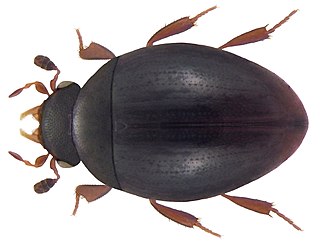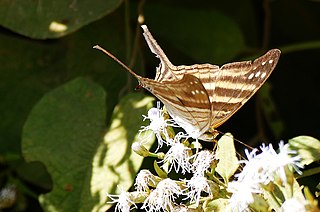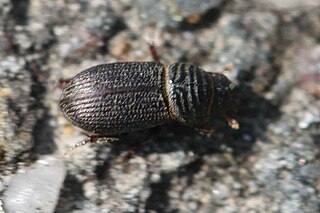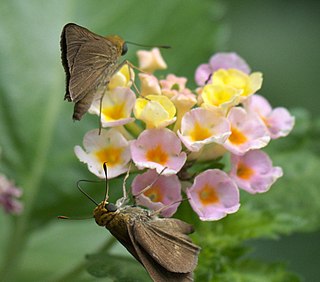
Convolvulaceae, known commonly as the bindweed or morning glory family, is a family of about 60 genera and more than 1,650 species of mostly herbaceous vines, but also trees, shrubs and herbs, and also including the sweet potato and a few other food tubers.
Zotalemimon is a genus of longhorn beetles of the subfamily Lamiinae, containing the following species:
Zotalemimon posticatum is a species of beetle in the family Cerambycidae. It was described by Gahan in 1894. It is known from Vietnam.
Megasternini is a tribe of water scavenger beetles in the family Hydrophilidae. There are at least 70 described species in Megasternini.

Megasternum concinnum is a species of water scavenger beetle in the family Hydrophilidae. It is found in Africa, Europe & Northern Asia, and North America.

Megasternum is a genus of water scavenger beetles in the family Hydrophilidae. There are at least four described species in Megasternum.

Ochthebius is a genus of minute moss beetles in the family Hydraenidae. There are at least 460 described species in Ochthebius.
Polygonus savigny, or Manuel's skipper, is a species of dicot skipper in the butterfly family Hesperiidae. It is found in North America.

Proteides mercurius, the mercurial skipper, is a species of dicot skipper in the butterfly family Hesperiidae. It is found in the Caribbean Sea, Central America, North America, and South America.

Marpesia chiron, the many-banded daggerwing, is a species of daggerwings, map butterflies in the family Nymphalidae. It is found in Central America, North America, and South America.
Cabares potrillo, the potrillo skipper, is a species of dicot skipper in the butterfly family Hesperiidae. It is found in the Caribbean Sea, Central America, North America, and South America.

Stilobezzia is a genus of predaceous midges in the family Ceratopogonidae. There are more than 330 described species in Stilobezzia.

Rhyssemus is a genus of aphodiine dung beetles in the family Scarabaeidae. There are more than 160 described species in Rhyssemus.

Xeralictus is a genus of sweat bees in the family Halictidae. There are at least three described species in Xeralictus.

Polygonus leo, the hammock skipper, is a species of dicot skipper in the butterfly family Hesperiidae. It is found in the Caribbean Sea, Central America, North America, and South America.

Electrostrymon angelia, the fulvous hairstreak, is a species of hairstreak in the butterfly family Lycaenidae. It is found in North America.
Ptycta is a genus of common barklice in the family Psocidae. There are more than 150 described species in Ptycta.

Ceroplastes is a genus of wax scales in the family Coccidae. There are more than 130 described species in Ceroplastes.

Epiphile adrasta, the common banner, is a species of tropical brushfoot in the butterfly family Nymphalidae. It is found in North America.

Nastra lherminier, the swarthy skipper, is a species of grass skipper in the butterfly family Hesperiidae. It is found in Central America and North America.














